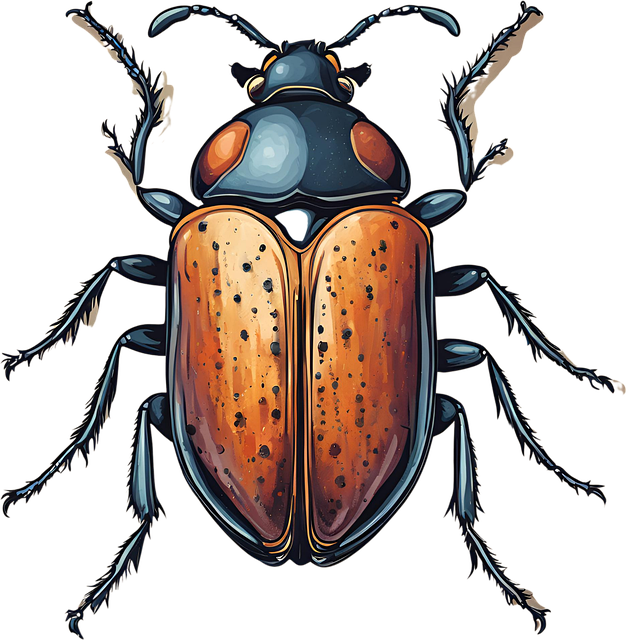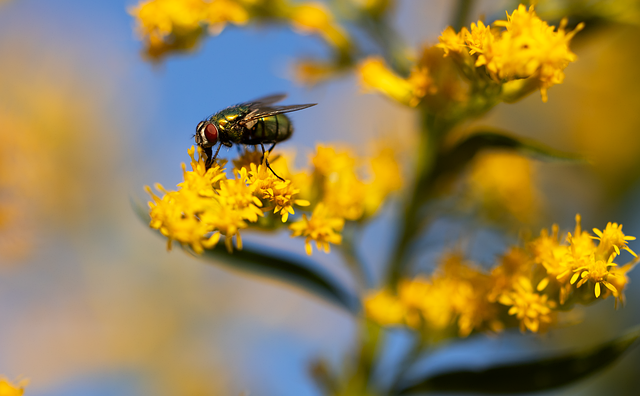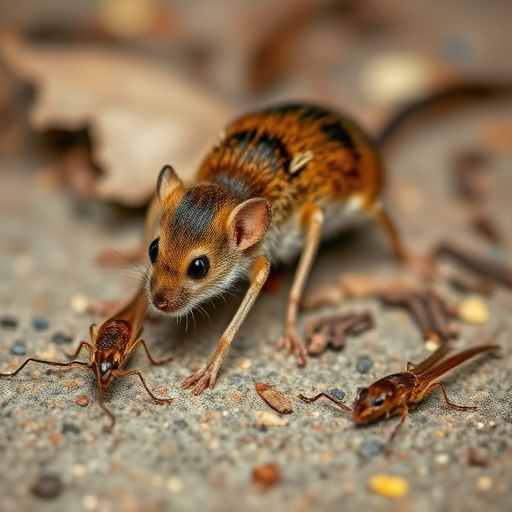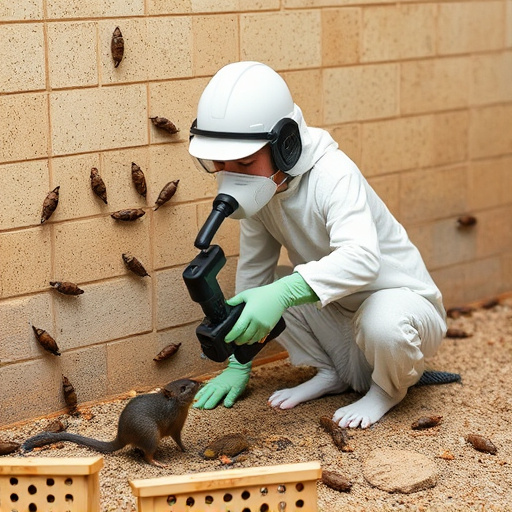Modern Pest Control Services have significantly evolved with the integration of electronic monitoring systems that utilize sensors and software for precise, real-time pest activity data, enabling targeted treatments and minimizing chemical use. These advanced systems accurately identify pest types, densities, and optimal intervention times, supporting predictive analytics for preemptive action against infestations. Machine learning algorithms further enhance these systems by adapting to new pest behaviors and environmental shifts, offering a dynamic and responsive solution. Additionally, biological pest control agents like beneficial insects and microbes have become integral to sustainable pest management strategies, providing natural alternatives to chemicals while preserving ecological balance. Robotics in Pest Control Services now complement traditional methods with their ability to survey areas for infestations that humans might miss, thanks to high-definition cameras, thermal imaging, and sophisticated sensors. This technology allows for remote monitoring and precise interventions, ensuring efficient and effective pest detection and eradication with reduced chemical use. Drones are also transforming Pest Control Services by offering an aerial perspective for early infestation detection and precision application of pesticides, enhancing the safety and sustainability of pest management. Lastly, heat-based solutions have emerged as a safe and effective alternative, utilizing precise temperature control to eliminate pests without harming the environment or occupants, and providing a comprehensive eradication method that directly addresses infestations. Pest Control Services adopting these technologies demonstrate a commitment to both effective pest mitigation and environmental stewardship.
21st-century pest control has undergone a revolutionary transformation, integrating cutting-edge technology for more effective and sustainable solutions. This article delves into the latest advancements that are reshaping the pest control services landscape. From electronic monitoring systems that provide real-time data to biological agents that offer eco-friendly alternatives, we explore the forefront of innovation in this field. The integration of robotics and drone technology further expands the capabilities of pest management, ensuring precision and efficiency. Additionally, heat-based elimination methods are emerging as a safe and swift solution for a variety of infestations. These technologies not only enhance the efficacy of pest control services but also prioritize environmental stewardship and consumer safety. Join us as we examine these significant shifts in the pest control industry.
- Advancements in Electronic Pest Monitoring Systems
- The Role of Biological Pest Control Agents in Modern Pest Management
- Cutting-Edge Use of Robotics for Effective Pest Detection and Eradication
- The Impact of Drone Technology on Pest Control Services
- Innovations in Heat-Based Pest Elimination: Safe and Swift Solutions
Advancements in Electronic Pest Monitoring Systems
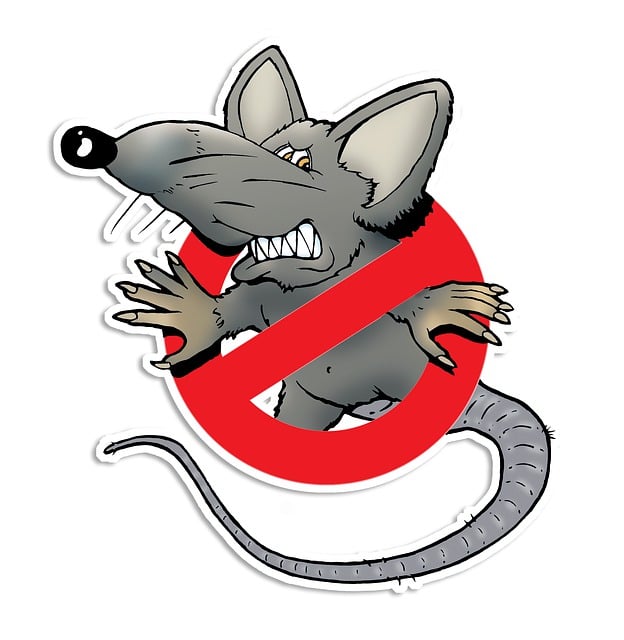
Modern pest control services have significantly evolved with the advent of electronic pest monitoring systems, which provide real-time data on pest activity. These advanced systems integrate sensors and software that detect and record pest presence, behavior patterns, and environmental conditions. They are particularly effective in identifying the types of pests that are active, their population density, and the optimal times for intervention. This level of precision allows for targeted treatments, reducing both the use of chemicals and the potential for resistance development. The data collected by these systems is invaluable for predictive analytics, enabling pest control services to prevent infestations before they become problematic. By continuously monitoring and analyzing the data, these electronic systems offer a proactive approach to pest management, ensuring that measures are taken only when necessary, thereby minimizing disruptions and maintaining a safer environment for both humans and pests. The integration of machine learning algorithms further enhances the efficiency of these systems, as they can adapt to new pest behaviors and environmental changes over time, offering a dynamic solution that keeps pace with the ever-changing landscape of pest challenges. As a result, electronic pest monitoring systems represent a significant leap forward in the field of pest control services, providing comprehensive, data-driven solutions for effective pest management.
The Role of Biological Pest Control Agents in Modern Pest Management
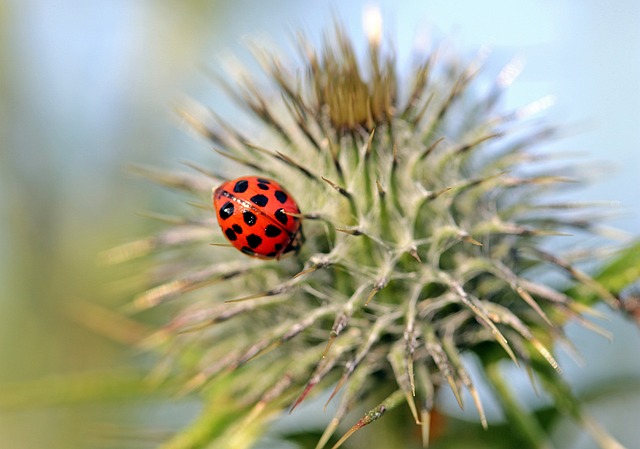
In the realm of modern pest management, biological pest control agents have emerged as a cornerstone in sustainable and environmentally friendly pest control strategies. These agents, which include beneficial insects, bacteria, viruses, and fungi, offer a natural solution to pest infestations without the detrimental effects often associated with chemical pesticides. Pest control services leveraging these biological agents are designed to complement and enhance the ecological balance by introducing organisms that specifically target pests while leaving beneficial species unharmed. For instance, entomopathogenic fungi and bacteria can be applied to control certain pests like cockroaches, ants, and beetles. These microorganisms infect the pest, causing mortality in a manner that is both targeted and highly effective. Similarly, introducing natural predators or parasitoids of the pest species can significantly reduce populations through a process known as biocontrol. This approach not only mitigates the risk of resistance development but also aligns with the increasing consumer demand for organic and eco-conscious pest control services, ensuring that the measures taken to protect crops or property do not inadvertently harm the environment. As a result, biological pest control agents have become integral to integrated pest management (IPM) programs, offering a sustainable and proactive solution to pest challenges.
Cutting-Edge Use of Robotics for Effective Pest Detection and Eradication
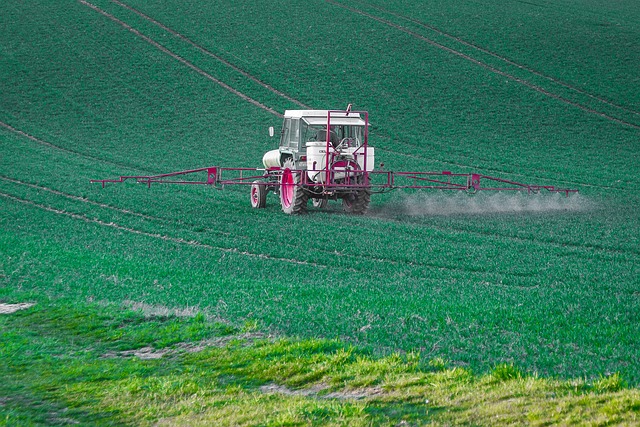
The integration of robotics into pest control services represents a significant leap forward in the quest for effective and efficient pest detection and eradication. Modern pest management now incorporates autonomous robotic systems that can survey vast areas with precision, detecting infestations that might otherwise go undetected by human inspectors. These intelligent machines are equipped with high-resolution cameras, thermal imaging, and advanced sensors to identify signs of pests with unparalleled accuracy. Their ability to operate around the clock and in environments potentially hazardous to humans makes them indispensable for both indoor and outdoor applications. Moreover, these robotic systems can be remotely monitored and controlled, allowing pest control professionals to respond swiftly and decisively to identified threats with targeted interventions. The use of robots not only enhances the safety of the environment by minimizing chemical usage but also ensures a more comprehensive coverage, leading to higher success rates in pest eradication programs. This cutting-edge technology aligns with the evolving standards within pest control services, offering a fusion of innovation and practicality that stands at the forefront of modern pest management strategies.
The Impact of Drone Technology on Pest Control Services
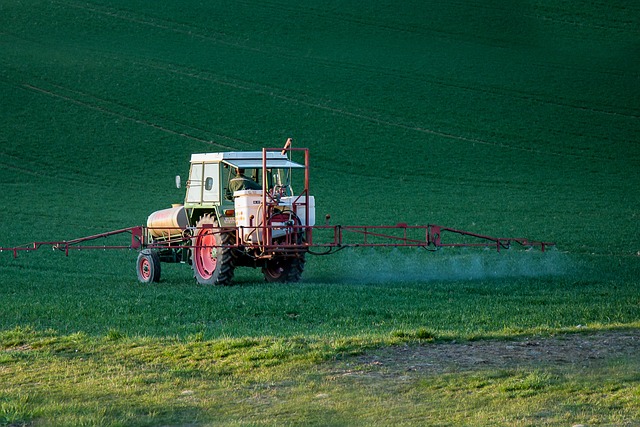
Drone technology has revolutionized many industries, and pest control services are no exception. The integration of drones into pest management strategies offers a multifaceted approach to both prevention and treatment. These unmanned aerial vehicles (UAVs) provide an elevated perspective, enabling pest control professionals to survey large areas quickly and efficiently. This capability is particularly advantageous for monitoring crop fields or expansive properties where traditional methods would be time-consuming and labor-intensive. Drones are equipped with high-resolution cameras that can detect signs of infestation at an early stage, allowing for prompt intervention before an issue escalates. Moreover, drones can access areas that are difficult or dangerous for humans to reach, such as tall trees or the interiors of large structures, thereby reducing the risk of injury to personnel.
Advancements in drone technology have also led to the development of autonomous drones capable of applying pesticides precisely and with a level of control that minimizes environmental impact. These drones can deliver targeted treatments directly where pests are present, reducing the amount of chemical used and thus lowering the potential exposure for both humans and non-target organisms. The precision application method also contributes to the health of ecosystems by minimizing overspray and runoff into water sources. As drone technology continues to advance, the integration of sensors and artificial intelligence will further enhance their capabilities in pest control services, leading to more effective, sustainable, and efficient solutions for managing pests.
Innovations in Heat-Based Pest Elimination: Safe and Swift Solutions
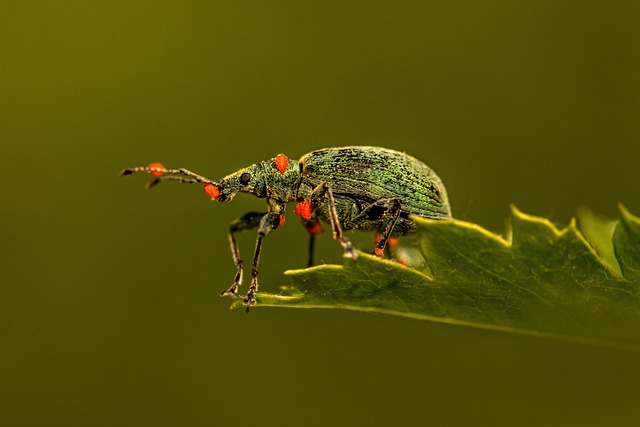
Recent advancements in pest control technology have led to the development of innovative heat-based solutions that are proving to be both safe and effective for eliminating pests. These systems utilize precise temperature control to eradicate infestations without the use of harmful chemicals, making them a preferred option for environmentally conscious consumers and commercial entities alike. The technology harnesses the natural sensitivity of pests to extreme heat, creating a controlled environment that quickly incapacitates and kills the pests. This method is particularly useful for treating large areas or structures infested with insects such as cockroaches, bed bugs, and termites, ensuring a comprehensive eradication that traditional methods might struggle to achieve.
Pest control services equipped with this cutting-edge technology offer a swift resolution to pest problems by targeting the thermal tolerance limits of the pests. The precision of heat application minimizes collateral damage to property and reduces the risk of secondary pest infestations. This approach is not only safer for humans, pets, and the environment but also more efficient in the long term as it addresses the root cause of the infestation. As a result, the integration of heat-based technologies into pest control services represents a significant leap forward in the industry, offering clients a humane, effective, and sustainable way to manage their pest issues.
In recent years, pest control services have undergone a significant transformation, harnessing cutting-edge technologies to deliver effective solutions. From the adoption of electronic monitoring systems that provide real-time data on pest activities to the innovative use of biological agents as natural pest regulators, the industry is evolving to meet modern demands sustainably. The integration of robotics and drone technology further expands the capabilities of pest control services, offering precision and efficiency. Heat-based elimination techniques, meanwhile, present a novel approach that ensures safety while effectively addressing pest infestations. These advancements collectively underscore a new era in pest management, where technology not only enhances the efficacy of pest control services but also aligns with environmental stewardship and consumer safety. As these technologies continue to develop and be refined, it is clear that the future of pest control is poised to be more precise, less intrusive, and ever more effective.
